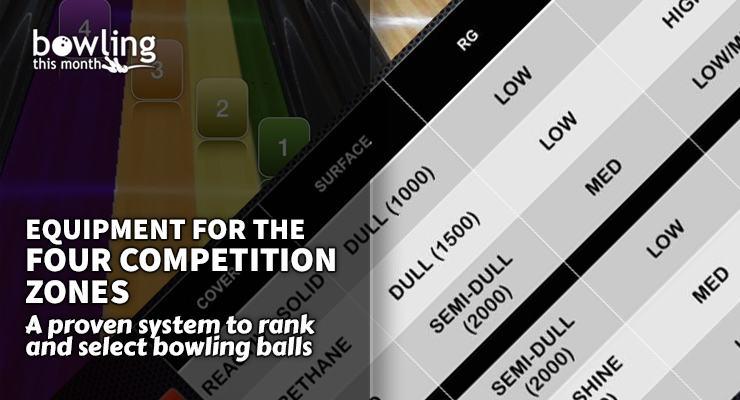When it comes to lane play in the modern game, it simply isn’t enough to have the skills you need for all of the competition zones. You also need the right equipment. In this article, I’m going to review the different kinds of ball reactions you need for each of the competition zones and then introduce a way to organize your equipment into a simple alphanumeric system.
We’ll touch on some of the important details, such as core design and ball surface, but the most important elements of understanding your equipment are having the right amount of skid and the correct hook shape for the zone and level of transition you are trying to play. Finally, I’ll provide some specific guidelines for rev-dominant, speed-dominant, and balanced athlete types.
Ball reactions for the four competition zones
I introduced each competition zone in detail in Bowling’s Four Competition Zones, along with descriptions and graphics showing how the zones typically transition for both lefthanded and righthanded bowlers.
The four competition zones require different ball shapes, angles, and skills that a bowler must master to effectively compete in all of them.
Based on these areas of the lane, you need different kinds of reaction shapes for the best results. While there are exceptions to everything, extremely angular equipment tends to not work well in Zone 1, while very smooth equipment tends to be less effective in Zone 4. We’ll start by defining the first parameter of our desired ball reaction: the arc/snap.
Zone 1
As Zone 1 is closest to the gutter, we’re usually looking for a ball reaction that releases energy gradually, with a soft change of direction downlane. This is usually called an arcing motion. People mostly associate this with urethane, but this can be achieved with other equipment as well, depending on the conditions.
Zone 2
Zone 2 is where we first start to see a wider range of ...
This article is only available to Bowling This Month subscribers. Click below to get instant access to this article and all of our other premium instructional content.
Subscribe to Bowling This Month
Already a Bowling This Month subscriber? Click here to log in.
